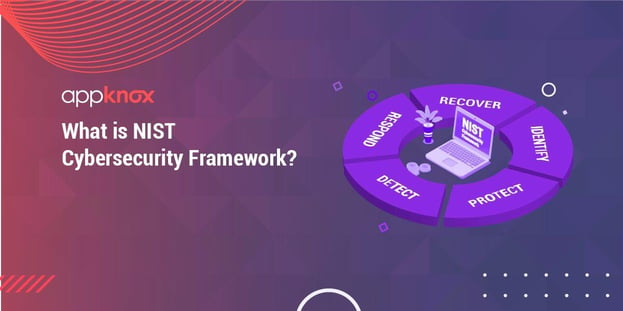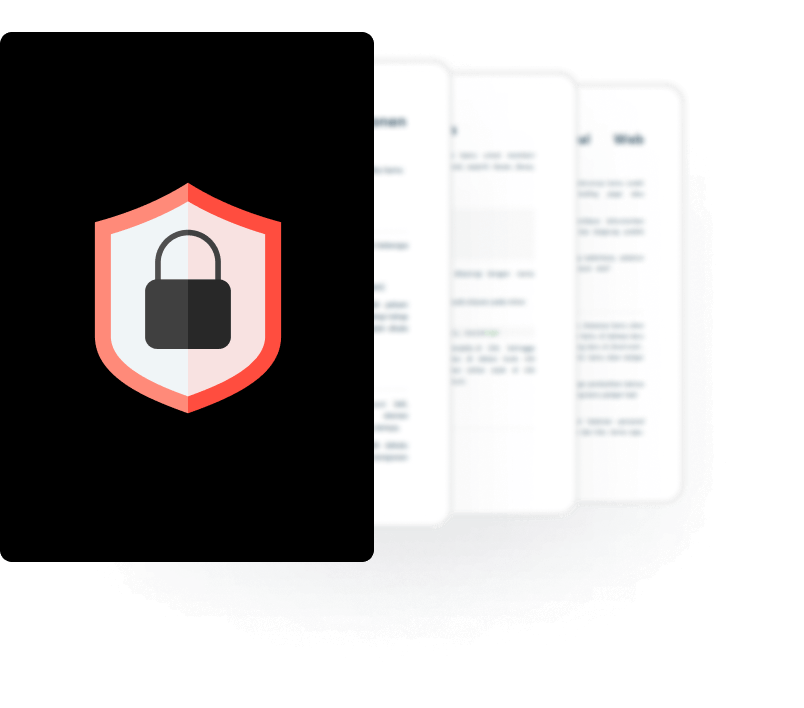
BLOG

BLOG
NIST Cybersecurity Framework (CSF) is a voluntary security framework created through industry, academic, and US government collaboration that aims at reducing cyber risks to critical infrastructure. The framework is a result of the Presidential Executive Order (EO) 13636 that directed NIST to develop a framework in collaboration with the security stakeholders of the economic and National security of the US.
Here, we explore the NIST Cybersecurity Framework in its entirety and discuss its structure, benefits, and implementation at length.
The NIST framework is based on the existing standards, guidelines, and best practices in security, and promotes the protection of critical infrastructure. The NIST CSF has a flexible, prioritized, repeatable, and cost-effective approach towards the management of cybersecurity-related risk.
The reliable functioning of critical infrastructure is the backbone of the United States and its increased complexity and connectivity has become a target of different cybersecurity attacks. These attacks can harm the target organization's ability to innovate, gain, and maintain customers. Further, they pose financial and reputational risks and affect the bottom line of every organization - its customers!
Hence, the NIST Cybersecurity Framework is a result of the updated role of NIST - working in collaboration with academia, industry, and government.
This cybersecurity framework also includes information security controls and measures and can be used by critical infrastructure owners and operators to identify, assess and manage cyber risks.
In February 2013, Barack H. Obama, the then US President, issued the above-mentioned Executive Order (EO) 13636 that focused on improving the cybersecurity of critical infrastructure.
The order called for the NIST to work in collaboration with the stakeholders to develop a cybersecurity framework that operators and business owners can use voluntarily.
The final version of the CSF document was released in 2014 in multiple languages, namely - Spanish, Japanese, Portuguese, and Arabic, for use by different governments.
The draft was revised in 2017, and the version was named Framework Version 1.1. It was made publicly available in 2018.
NIST CSF is a system of security standards, guidelines, and best practices that help critical infrastructure organizations and their operators to identify, assess and manage cyber risks. It is a flexible and cost-effective approach to promote organizational security and make the critical infrastructure more resilient and robust against the increasing number of attacks.
The framework derives its importance from various benefits its offers, that are:
NIST CSF is a result of combined efforts and experiential learnings of thousands of security professionals, academia, and industry leaders. Hence, it obviously exceeds the application and effectiveness of the standalone security practice and techniques. It is widely used and acknowledged as the most comprehensive security framework by multiple sectors - SMBs, Healthcare, Homeland Securities, Academia, and critical infrastructure.
CSF is a cybersecurity and risk management framework that you can use for the long term, as long as you want. You migrate from the "audit-based" security management mindset to a more responsive and adaptive security posture. Consistent compliance with the NIST Cyber Security Framework proves to be a strong and resilient strategy in the long run.
Compliance with the NIST CSF has a ripple effect on your clients, prospects, and supply chains. In the wake of a plethora of security attacks, businesses are looking for businesses with consistently adapting security postures and CSF is a substantial selling point in such deals.
CSF is the most flexible, repeatable, and cost-efficient security framework as of now, because of its result-driven and risk-based approach. It is being used by a myriad of organizations in every sector and comes with highly customizable features. The functions are intuitive, and highly comprehensive that make it the best security framework for every organization undoubtedly.
Related Blog: A Glance At The United States Cyber Security Laws
The NIST Cybersecurity Framework has three main components (as shown in the visual below):
The Framework Core offers a number of desired cybersecurity activities and their outcomes presented in the form of categories. It is available in simple and non-technical language that makes it easy to understand for multi-disciplinary teams.
The framework profiles represent the various alignments an organization can have for their unique security requirements and objectives and risk appetites. It also represents which resources these organizations require for the desired outcomes of the CSF core. Organizations can also use the profiles to identify various opportunities for improving their security posture by comparing their existing profile with a target profile.
The organizations can prioritize their implementation plans on the basis of the gap analysis between the existing profile and the target profile.
NIST CSF tiers represent the degree to which an organization exhibits the security and risk management characteristics mentioned in the framework. However, the tiers don’t necessarily represent the maturity of an organization in security and risk management.
The organizations have to determine the desired Tier and ensure that the levels in it meet the organizational goals. This will help them lower cybersecurity risks to acceptable levels and make it easier to implement security financially and otherwise.
Organizations can compare the current security profile with the target security profile and gain a better understanding of their current security posture. Further, as the framework is adaptive and risk-based, the organizations can use it for a long-term assessment.
The CSF structure offers deep insights into the various outcome-driven security and risk management activities. As these activities are yet again mapped to the profiles that are unique for different business organizations, the operators can prioritize them. Such prioritized critical activities allow for better strategizing.
The NIST Cybersecurity Framework allows compliant businesses to stay relevant and security-forward at all times. The framework is itself adaptive and flexible which means the organizations can align themselves as per the evolving security regulations and future compliance requirements.
The framework components help the business organizations to identify various risk mitigation strategies via the category and sub-category information. Further, the entire information is available in a non-technical and easy language that makes the model perfect for business organizations of all scales and all types.
The compliant organizations can easily use the results of the gap analysis between the current and target profiles to evaluate which security tools and processes they should opt for next. This guided adaptation towards the emerging security pain points comes as an impeccable help for all the organizations.
Cybersecurity investments can put a huge strain on organizations with limited finances. The CSF tiers offer excellent assistance in this regard by showing how a potential investment in a particular cybersecurity tool or practice affects the security goals and finances of an organization.
The operators can also determine whether they will be able to match the target profile after this investment or not. Hence, NIST CSF offers a more precise measurement of investment ROI.
As all the stakeholders can see how profiles and outcome-driven statements promote enterprise security, they can communicate more effectively. Strong communication among all the stakeholders, namely - IT, business, and executive teams facilitates cost-effective prioritization and better communication of improvement activities with clients, investors, and customers.
As discussed above, the NIST CSF Core has five functions - Identify, Detect, Protect, Respond and Recover, that are applicable to risk management and cybersecurity risk management.
Risk Management Processes
At Tier 1, cybersecurity risk management is typically reactive, with almost no prioritization on the basis of the degree of risk.
Integrated Risk Management Program
These organizations don’t have consistent information for risk management and work with a case-by-case approach.
External Participation
As these organizations don’t clearly understand their position in the supply chain, they are unable to identify and thwart the supply chain risks. These risks can also be passed on to the other members they work with.
Risk Management Processes
In Tier 2 organizations, the management approves risk management practices but they are not well-established. However, the security practices inform the prioritization of cybersecurity activities.
Integrated Risk Management Program
The cybersecurity risk awareness is not organization-wide, and the related information is shared only informally. There are no standard organizational security objectives and there are no periodical repetitions of risk assessments.
External Participation
These organizations only have a partial understanding of their position in the ecosystem (supply chain). They might be aware of the supply chain risks, they don’t act on them.
Risk Management Processes
Tier 3 organizations have proper risk management practices and policies that are updated regularly on the basis of changes in security requirements and threat landscape.
Integrated Risk Management Program
These organizations have - Risk-informed policies, Processes, and Procedures that are defined, implemented, and reviewed regularly.
External Participation
Tier 3 organizations regularly collaborate with other entities in the business ecosystem to share information about supply chain risks and act formally on them.
Risk Management Processes
These organizations are constantly improving and adapting their cybersecurity practices. They also adopt innovative cybersecurity technologies and adapt to the evolving threat landscape.
Integrated Risk Management Program
Cybersecurity risk and security are shouldered by all the management stakeholders and are ingrained into the organizational culture.
External Participation
Tier 4 organizations receive, generate, and contribute to the overall understanding of the supply chain risks.
Begin with setting data security goals and the acceptable levels of risk. Identify the business areas that need protection and prioritize the most important steps to secure them.
Every business has different security requirements and based on the framework's Tiers, you can create a unique security profile for your business.
Compare the current security profile with the target security profile and find out where you stand in terms of security and risk management.
You don’t have to reach the target profile right now, but you have to arrive there gradually. So, do a thorough gap analysis between the current and target security profile and plan the actions you need to take to remove this gap.
Now that you have the exact mapping to follow, you must prioritize these actions and start taking them one-by-one. Create training and reference materials for all the stakeholders as you do so.
Make the most of the NIST resources and training guides by using and learning from them continuously.
Appknox is a security-forward mobile application security solution provider that makes security a continuous part of the development lifecycle. It offers real-time DAST and more than 120 test cases to test the app’s security in real-time. Appknox also comes with dynamic induced API testing capabilities and issue reporting tools that allow you to take precise action in a timely manner.
Appknox offers three types of vulnerability assessment - SAST, DAST, and API, apart from penetration testing. It also continuously tracks your mobile apps for compliance gaps like HIPAA, PCI DSS, and OWASP as well, and is just the right solution to make your security posture more robust and more resilient.

Hackers never rest. Neither should your security!
Stay ahead of emerging threats, vulnerabilities, and best practices in mobile app security—delivered straight to your inbox.
![]() Exclusive insights. Zero fluff. Absolute security.
Exclusive insights. Zero fluff. Absolute security.
![]() Join the Appknox Security Insider Newsletter!
Join the Appknox Security Insider Newsletter!
